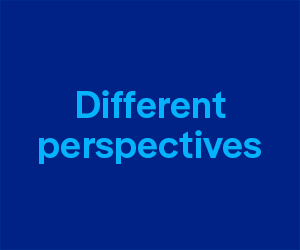
By Doug Barrett
IN ANY STORY OF corporate “restructuring” or “streamlining” there is always another, inside story. What, in the case of the recent, and ongoing, terminations at Bell Media was that story, and how will the aftermath shape the development and production of programming in Canada?
Full disclosure: I have no inside knowledge of what occurred and have not spoken to anyone involved. On the other hand, having had a fair amount of experience in these things over the years as a lawyer and executive I have some insight.
Let’s start with the sheer scale of the thing. At least six of the most senior people on the content side at Bell Media were let go in a single blow. As Brad Danks was quoted as saying in Playback: “These are among the finest executives we have in this country”. I think he’s understating the case.
This team of people are among the finest content executives ever assembled in any country. Each and every one of them is an effective, high performing, well respected, hugely experienced industry veteran. Each has been an outstanding ambassador for Bell Media in the content space. Together, if my calculation is correct, they have over 100 years of Canadian broadcast experience with Bell Media and its predecessor owner, CTV. And, they successfully served three presidents under the Bell Media ownership regime doing pretty much the same jobs they were doing on their termination.
What then are the losses to Bell Media (and to the Canadians it serves)? I can think of five areas.
- First, this group as senior members of the leadership team had been needed, core advisors to successive presidents, each of whom came from outside the company (Kevin Crull from 2010 to 2014 and Mary Ann Turcke from 2014 to 2017 were from the telecom side; and Randy Lennox from Universal Music Canada from 2017). The new president, Wade Oosterman, likewise comes from the telco side of Bell and will not have the deep institutional knowledge of the departed executives while he learns the ropes.
- Then there are all the relationships with content suppliers, built up over the years in both conventional and specialty television. Who has the best ideas in the pipe? Who has the strongest relationships with creatives? Who has the best record for on time, on budget delivery? Who has that special touch that draws audience loyalty? What about that core driver of all of Bell’s channels: American programming?
- Who will have the ongoing expertise to make the right picks to draw audiences and advertisers? Who will be responsible for managing the activity at the L.A. Screenings, the place where more money gets spent faster than at any other event?
- What about the whole global community of program buyers, the folks that can come in on a deal to complete the financing and help drive it forward? Of course, the key ones all know each other. Who is going to manage that when the owners of so many of these relationships have been walked out the door?
- Finally, Bell has recently embarked on a completely new business with its own dynamics and its own risks and opportunities: Bell Media Studios. Post transition it will be managed by the person who also runs local TV and radio. To me that’s just apples and peanuts.
There is no doubt Bell Media is much-diminished as a result of this move and it’s hard not to conclude that this was an explicit objective. That’s why many commentators have seen this as part and parcel of a move away from broadcasting. Maybe. But it could also just be about money. Collectively, with all their years of experience, they would have been an expensive group. I am guessing roughly $3 – $3.5 million in base pay and 1.5 to 2 times that in total compensation for the lot of them.
Ironically, though, the publicly available information on Oosterman’s 2019 compensation indicates a base pay of $900,000, incentive compensation of $1,146,600, and other types of share based compensation bringing his total package to a value of $6.8 million. If Bell Media has to carry this whole package the financial savings above may well be somewhat illusory. One therefore assumes there is more cost cutting to come.
Another odd part of this story has to do with Randy Lennox. The first shoe dropped when Bell announced last October 19 Lennox would be leaving the company on January 4 (a Monday!) and Oosterman would be assuming operational leadership in his place. Sounds like a smooth and well-organized transition, as I am sure it was meant to sound. Most importantly, Mr. Lennox did not immediately leave the company, permitting a 2.5-month crossover period.
“I am going to stick my neck out here and suggest despite the appearance of a well-organized transition, Lennox may well have been sidelined back in October.”
Part of the transition process I am sure was the extended interview, published on December 22, that Lennox gave Playback. In it he spoke of his own early learning curve and his pride in Bell Media’s accomplishments and noted that “100% of the content that we selectively created has received international distribution.” He also spoke of the reinvention of Crave on the digital side into a “really formidable, two-tiered platform.” These are important coups.
Significantly on the management team side he referred to his “empathy” and the “spiritual change” among the group. “I can say unequivocally that we are now an extremely tight family”. “I’m hoping my legacy is that I set the ship in a new direction, and that some of the deals I’ve made will protect the stability of the company in the future. I’m hoping that my policy of excellence and empathy will be lasting throughout the organization, and that I leave that DNA with the people I’ve worked with.”
The whole tone of the interview left the expectation of management continuity and building on earned successes.
How does this tone ring against the Playback headline just 24 hours after Lennox’s departure: “A raft of the country’s most senior content executives have exited the company”. Note the words “have exited”. No smooth transition for these folks.
Now, Lennox is a well-regarded guy and many would say he is due kudos for lasting as long as he did. I am going to stick my neck out here and suggest despite the appearance of a well-organized transition, Lennox may well have been sidelined back in October and did not participate in the management redesign. It’s hard to square that possibility with the exit interview. Starting last fall, Oosterman wanted to put his own stamp on the management team and will now have to live with these decisions.
In the Playback interview, Lennox reported when he left Universal Music Canada to join Bell Media, he thought about 50% of what he knew was “translative” from the music world to the television world; in fact he learned that it was only 20% and he acknowledges spending 18-months to two years before he “hit his stride.” Given that Oosterman has spent his entire career in residential services at Bell, how long will it take him to hit his stride?
And what will be the cost to Canada’s leading media company and to the future of Canadian production?
Doug Barrett is a veteran of over 30 years in the Canadian media and entertainment industries and since 2008 a professor in Media Management Schulich School of Business of York University. He is also the Principal of Barcode SDG, a strategic advisory firm. He was also president and CEO of PS Production Services from 2006 to 2013 and prior to that spent 20 years as one of Canada’s most successful entertainment lawyers, serving as senior partner at McMillan LLP. From 2004 to 2008, he served as chair of the board of directors of the Canadian Television Fund and has also served on several additional industry boards.




